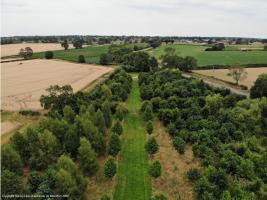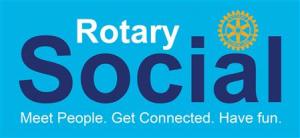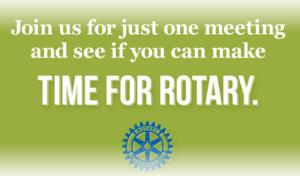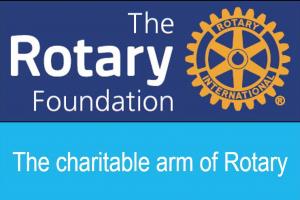Club Meeting - NATS
Wed, Apr 10th 2024 at 6:00 pm - 7:30 pm
NATS is the UK's leading provider of air traffic control services. In a typical year pre-Covid, they handle over 2.5 million flights and 250 million passengers travelling over the UK and across the North Atlantic.
Club members please log in for more information.
Speaker: Robin Bowler, NATS (National Air Traffic Services)
LDM’s very own Biggles began by suggesting after a very wet winter we were all in need of an escape. We have had 170% of the usual rainfall and just 70% sunshine! A photograph of blue sky and snow covered Swiss mountains (one of Robin’s favourite places) wetted the appetite for getting away but anywhere sunny would be welcome.
When we are flying we perhaps don’t think about all the others who are sharing the air space……. not just other airlines but private aircraft on journeys, doing aerobatics, pretending to be Biggles doing WW2 dog fights, gliders, drones and hot air balloons, for example! Freedom of the sky - not quite, it would seem.
NATS is responsible for commercial aircraft and for certain parts of the sky. Robin showed a schematic of flight paths which cover most of the world other than the Antarctic. There are Apps which enable anyone to see the planes flying in real time, where they are going and what they are. Some of the busiest air space is over the US and Europe. Looking at a global picture we could see where most of the activity abounds but we could also see there were no planes over the Ukraine…… Any aircraft with a transponder will be picked up and seen, including light aircraft and military planes.
We then saw a moment in time over the UK, last Friday. Concentrations of aircraft could be seen around Heathrow, Gatwick and Manchester and we could tell whether it was a plane, a helicopter etc. Some of the craft seen would have been on the ground if a transponder is active. Aircraft could be seen as they were approaching Heathrow, for instance. Heathrow operates at 98% capacity so there is little leeway - reliant on the skills of the controller to keep them all apart. Busy airports, like Heathrow, will have a stack of planes in a spiral above. The controller will call them in as their slot is available, keeping them apart - how far apart varies with the craft involved as large aircraft cause turbulence which will adversely affect a following small aircraft, for instance. Planes in the stack will drop altitude as the lower ones are brought in to land. Maintenance of separation is crucial in all aspects of the approach. The UK will have 2.5 million flights over the year, carrying 250 million passengers…… There are air corridors over the UK for commercial aircraft - light aircraft steer clear! The corridors are at a high altitude but above airports they extend to the ground. Aircraft flying north to south and those flying south to north are kept 1000 feet apart. Only Heathrow and Gatwick, in the UK, handle enough planes to need to stack - Heathrow has the potential for four stacks whereas Gatwick has two.
Aerodromes, like Leicester, will have an area around the airfield and up to 2000 feet as an air traffic zone and the planes will be controlled by local control towers - many of these will only be advisory and are not part of the national system, unless they are paid staff e.g. East Midlands and Manchester where NATS will hand over aircraft to the local staff. As military aircraft will be flying faster the zone will be 10 miles and extend much higher.
Airspace is classified:
A - over the UK, most regulated
C - 19500 to 60000 feet, requires clearance to enter
D - controlled aerodromes where speed is restricted to 250 knots
G - open airspace where there are no rules other than those of the air.
Some airspace is restricted, particularly military airspace, where you cannot fly without authorisation. There are some danger zones over firing areas, for instance. Robin showed a picture of the Leicestershire area showing airport/aerodrome locations. Each identified area on the map also indicated the number of runways - East Midlands has only one whereas aerodromes will have several as light aircraft have to take off into the wind. Light aircraft do not use large airports due to the speed differences of the planes - imagine Heathrow traffic having to wait whilst a light plane wanders its way
in! There are areas of restricted airspace over prisons - locally we have experienced an escape from Gartree by air! There is a danger area near Waddington due to the use of unmanned aerial systems.
Robin gave us some interesting facts:
l Air traffic control is from Swanwick (south) and Prestwick (north)
l Last Thursday there were 5829 flights
l Typically there will be 500 craft currently airborne
l East Midlands has flights through the night as it is a freight terminal
l There are flights over the country 24 hours a day
l Military and civil air controllers will be in the same operations room
l Distress and diversion will be dealt with in the operations room - mayday calls will be picked up on radar and the plane will be given instructions/directions
l NATS is owned (used to be nationalised)by:
n Government 49%
n Airline Group 42%
n NATS staff 5%
n UK airport operator 4%
l ATC - 3 year training course. Only 20 of 1000 will be successful
l £750K to train an ATC
l Wages of an ATC start at £50k, rising to £100k for a full licence
l An ATC shift will be organised with 1 hour on, 30 minute break etc.
l ATCs will have a medical fitness test annually.
Flight separation:
l Corridors will be 10 miles wide by 5000 feet
l Aircraft separation - 3 nautical miles (nm) by 1000 feet
l Over the Atlantic lateral separation is typically 60nm by 2000 feet
Flights are recognised by transponders and satellites. Atlantic traffic is picked up by the UK when it approaches Scotland. Ireland has its own air traffic control. Robin had brought an example of a map used by pilots in light aircraft - opened up fully it would fill the cockpit! He told us there is a particular way of folding…… Aircraft descend through controlled airspace with the height varying along the route from around 10500 feet to ground level to East Midlands, for example. NATS handle flights coming in to East Midlands to a certain height, talking to the controllers at East Midlands they then hand over the flight to the local guys/gals. Robin told us collisions are extremely rare in controlled airspace but told us of one that happened in Swiss airspace in 2000. Collisions outside of controlled airspace are more common and we remembered the one involving a glider near Melton Mowbray in August 2023. He also talked to us of Airprox reports - if a pilot feels craft are closer than they should have been a report can be filed - the example he gave us of the split between piloted and unmanned aerial vehicles was 177 v 84.
In question time we talked about drone deliveries and learnt that air traffic control is standardised throughout the world with one service passing a flight on to another. It’s a shame international co-operation does not work more widely……. A landing is a controlled collision, David shared with us! We also learnt of the existence of TCAS (Traffic alert and Collision Avoidance System) which warns the pilots of the presence of another aircraft that may pose a threat, giving instructions to avoid a collision.
'What We Do' Main Pages:
Venue .Loughborough University.
more
Located on the A5199 Welford Road, between Foston Rd and Arnesby, The entrance location ///crew.broad.branch. SEE DETAILS BELOW...
more.jpg)
.The club continues to undertake a varied and active involvement with environmental projects - NEXT WORK PARTY DATE = 18th March 2024
more
.Club President Stuart accompanied by Rotarian LInda, visited Knighton Mead Academy on 3rd March, to present Young Writer Awards.
more






